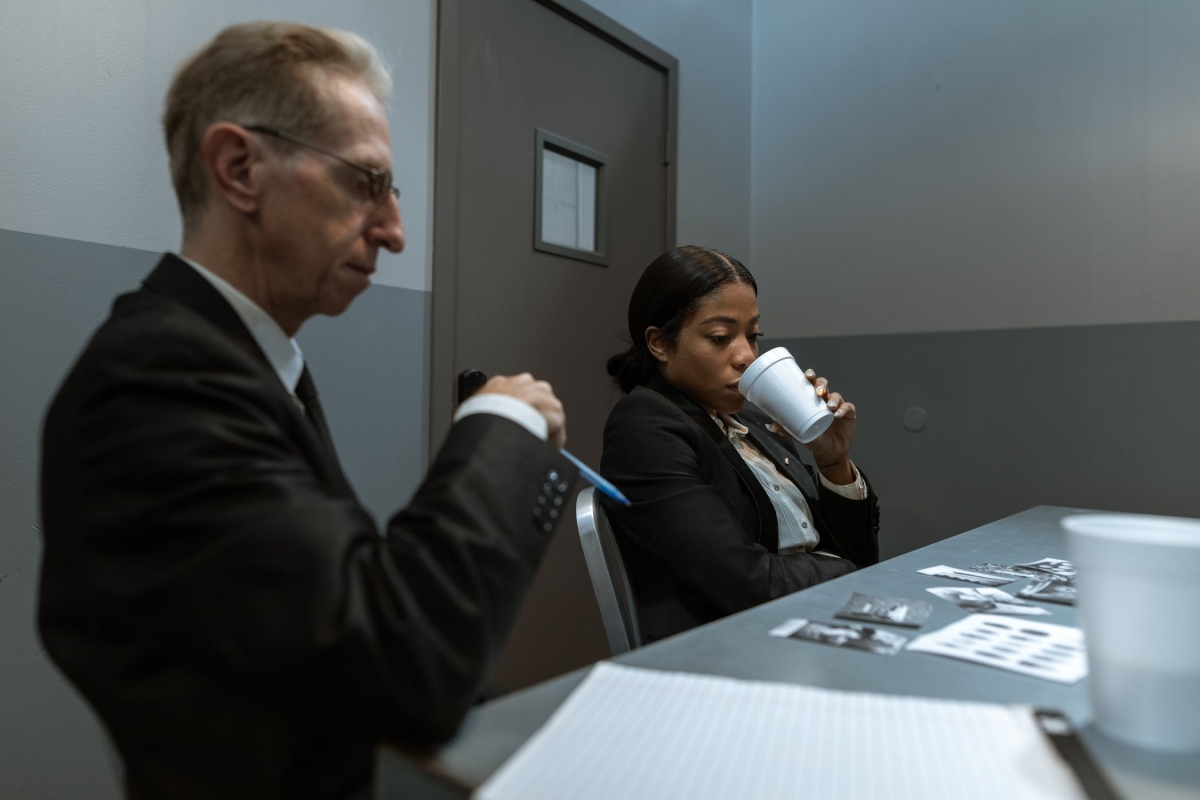Are Victim or Eyewitness Statements Credible? Several Ways to Check Them
In 2014, two teachers and six janitors were accused of child sexual abuse at Indonesia's Jakarta International School (JIS). Three preschool children reported that they had been repeatedly sexually abused by them. The statements of the alleged victims became one of the most important pieces of evidence to convict the suspects. These testimonies were such important evidence because corroborative evidence was absent to support the children's claims of sexual abuse by the suspects. The teachers and janitors were eventually sentenced to between 7 and 11 years.[1] However, memory scholars argued that the children’s testimonies might have been false because of suggestive interviewing techniques by the children’s mothers (1).
The JIS case shows that statements of eyewitnesses and victims can play an essential role in legal cases, especially in child sexual abuse cases where there is a lack of objective evidence (2) . However, not all witness statements are valid. That is, our memories are not a perfect reproduction of the past, but are reconstructive, and errors and distortions might slip in unintentionally, leading to false memories (i.e., memories of non-experienced events; 3). Such false memories may result in false accusations which might even result in miscarriages of justice (4). Therefore, determining statements validity is crucial in many legal cases. Psychological expert witnesses are oftentimes asked for advice on the validity of statements (2, 5, 6).
Reliability, Validity, and Credibility of Statements
Before we elaborate on which tools and methods can be used to assess witness statements' validity, it is imperative to clarify various related terms such as validity, credibility, and reliability. Particularly, in everyday language, these terms are virtually interchangeable; in psychometrics, they have distinct meanings. In the latter, reliability refers to the consistency, such as temporal consistency, which means that a measurement should yield the same outcome if repeated (7). By contrast, validity refers to the degree to which a test measures what it purports to measure (7, 8). However, the use of terms such as reliability and validity in statistics varies with how these terms are used in the courtroom. Suppose an expert witness wants to examine whether statements of victims or eyewitness referred to events that they truly experienced. In this case, expert witnesses want to examine whether the statements are valid, as validity in statistics means to measure what is assumed to be measured. However, in the legal arena, the term reliability is oftentimes used in this regard. That is, in the legal arena, statements' reliability implies that victims’ or eyewitnesses' accounts originated from memories of experienced events or were based on true memories (9). Meanwhile, credibility refers to apparent convincingness of statements (e.g., detailedness, elaborateness, and more coherence; 2).
Other related terms are accuracy, consistency, and completeness (e.g., 10). In general, accuracy refers to whether victims or eyewitnesses' statements reflect what precisely unfolded. However, in many legal cases, this is unknown as the alleged event's ground truth is not clear. Hence, judges, juries, and lawyers focus on inconsistencies and contradictions between two or more statements (11). They tend to believe that inconsistency reflects inaccuracy (12; but see 10). Finally, completeness refers to the wholeness of information or detailed information without omissions errors (10).
Which Tools Exist to Evaluate Statement Validity?
Verbal Credibility Assessment
As an expert witness, several ways can be used to determine the reliability of a statement. One method that is widely used is the statement validity assessment (13), of which the main component is the assessment of the statement’s content quality through Criteria Based Content Analysis (CBCA; 14). The CBCA contains 19 criteria, and the presence or absence of those criteria is supposed to distinguish between truthful and fabricated statements.
One of the criteria is contextual embedding, which describes the events happening at that time related to time, situation, etc. If a statement contains many contextual embeddings of the event (very specific descriptions), it will score highly on this criterion. For example, a statement such as “I was in the school toilet, right in front of the toilet door, was standing waiting for the person inside to come out. It was right after school break time, around 10 am. I always pee in the school toilet around that time.” contains a spatial and temporal context, and also habits. Expert witnesses sometimes assess statements of victims using these CBCA criteria. An account is considered to be likely true if a substantial number of criteria are present.
Another method to distinguish between truthful and fabricated statements is Reality Monitoring (RM; 19). This approach is comparable to CBCA, but the underlying theory is rooted in memory research. It is based on the finding that there are quantitative differences between memories for perceived and imagined events. Compared with memories for imagined events, memories for perceived events have more sensory, contextual, and affective information (20). For example, the statement "I was very scared at that time, my hands were sweaty and my heart was beating fast" is an example of a statement with much affective information. By contrast, imagined experiences are assumed to contain more references to cognitive operations (e.g., reasoning).
Recently, Nahari et al. (23, 24) introduced a new approach in verbal credibility assessment called the Verifiability Approach (VA). This approach relies on the idea that liars tend to avoid including too many details in their testimony because that would require them to memorize these (false) details. Particularly, liars will avoid including details that might be checked (i.e., verifiable details). For example, Nahari and colleagues (23) found that liars provided fewer perceptual, spatial, and temporal details that could be verified, and truth-tellers provide more verifiable details than liars.
Alternative Scenario Approach
As an alternative to the verbal validity assessment techniques such as CBCA, a scenario approach has been recently described (26). In the (alternative) scenario approach, the likelihood of the statement has to be estimated within two concurrent scenarios, the primary scenario (suspect is guilty), and the alternative scenario (suspect is innocent) (27).
The scenario approach may well be irrelevant whether the statement scores high on verbal validity assessment techniques. This is so because a credible statement fits well in the guilt scenario, but also in the innocent scenario, if the witness suffers from false memory or lies and is knowledgeable about credibility assessment techniques. Hence, the scenario approach concentrates on the developmental history of the statement rather than on its final appearance.
A case illustration provided by Rassin (28) may help to illuminate the scenario approach. Suppose the police found a body at a crime scene, and a second person was found next to him with a knife in hand. This person is the main suspect but denies. He said that the victim had been stabbed when he found him, and he pulled the knife from his back to save him. Based on that case, two scenarios might be postulated: the first scenario is that the person has indeed committed murder, and the alternative scenario is that someone else who did. Subsequently, we must wonder how likely it is that the police find the suspect next to the victim if the suspect just stabbed the victim (primary scenario), and how likely it is to find the suspect if he just found the victim tried to save him. The latter cognitive operation will make the decision-maker aware of a potential lack of specificity of incriminating evidence. In our example: Finding the suspect next to the victim seems incriminating, but maybe less so if we consider that finding him there also perfectly fits in a sensible alternative scenario.
Examining the Interview
Interviewing victims as witnesses is a crucial way how the police can gather information about crimes. When expert witnesses are asked to assess victim statements' reliability, one way that can be used is to look at how the interview process took place and what the interview content was (5, 29). Interviews play an key role in assessing the reliability of victims' statements because the type of question asked might also determine how the victim provides the statement. For example, when a police interviewer provides suggestive questions (e.g., “You were also touched, right?”), these might negatively affect testimonies even potentially leading to false memories (30).
An important task that expert witnesses can do is to analyze the types of questions interviewers use when interviewing victims and eyewitnesses. For example, the National Institute of Child Health and Development Protocol (NICHD; 29) is an evidence-based interview protocol to interview children and contains well defined question types that interviewers should and should not ask during an interview. In general, the NICHD Protocol distinguishes between invitations (e.g., “Tell me everything ....”), directives (e.g., “When did it happen?”), option posing (e.g., “Did he touch you over or under your clothes?”), and suggestive questions (e.g., “He wanted to kiss you, didn’t he?”. The emphasis of NICHD protocol is on the continuous use of invitations, and only when children's free recall is exhausted, closed-ended questions such as directives can be asked. Research has revealed that the NICHD protocol leads to highly detailed and accurate testimonies in children (29).
So, expert witnesses might analyze which type of questions was asked during an interview. When victims or eyewitnesses are predominantly interviewed using invitations/open-ended questions, then the expert witness can conclude that the interview was well conducted and might have led to reliable accounts. The reason why expert witnesses cannot state that a well-conducted interview has led to reliable accounts is because victims or eyewitnesses might have been interviewed before by someone else (e.g., friends, therapists, teachers). These earlier interviews might have been suggestive and might have already resulted in contaminated memories. Therefore, besides looking at the interview, a thorough examination of the context of the first statement and interview is necessary to examine the reliability of statements.
Furthermore, apart from looking at the types of questions asked using the NICHD Protocol, expert witnesses can analyze in more detail how forensic interviews are conducted. A promising way is to use The Griffiths Question Map (GQM; 5). GQM has been used to test the quality of victim interviews by identifying the type of questions as a function of its context and taking into account the chronological order of the questions and the questions' dynamics. The idea is that well conducted interview should start with the use of invitations and can end with the inclusion of more closed non-suggestive questions. Expert witnesses might use the GQM to help judges or jurors to evaluate the quality of young witnesses ' and victims' interviews. The use of interview protocols (e.g., NICHD) and mapping the interview (e.g., the GQM) can help expert witnesses have a complete picture of how the interview was conducted and when examining witness or victim accounts about the events.
Final Remarks
Statements from eyewitnesses or victims play an essential role in legal cases. Expert witnesses can use several tools to evaluate victim or eyewitness statements' reliability. Of the many tools that expert witnesses can use, it is essential to note that expert witnesses need to understand that each tool used has various strengths and weaknesses. When asked to provide expert testimony in a particular case, expert witnesses must consider which approach is needed, varying from analyzing statement characteristics with CBCA or RM, to analyzing interview quality (e.g., The GQM). Moreover, expert witnesses might use the scenario approach and then analyze the evidence supporting and against each scenario. The alternative scenario approach helps expert witnesses to see all possibilities and might protect them against biases. Obviously, with various tools at their disposal, it is crucial that experts consciously select the most appropriate approach in each case. Particularly considering that expert witnesses' assessment results play an important role in legal decisions.
References
- Calado, B., Sumampouw, N., Otgaar, H., Luke, T.J., Landström, S., & London, K. (in press). Coercive Child Forensic Interviewing and Allegations of a Magic Stone: The Jakarta International School Case.
- Volbert, R., & Steller, M. (2014). Is this testimony truthful, fabricated, or based on false memory? Credibility assessment 25 years after steller and köhnken (1989). European Psychologist. http://doi.org/10.1027/1016-9040/a000200
- Schachter DL. (2012). Constructive memory: past and future. Dialogues in Clinical Neuroscience, 14(1), 7–18. Retrieved from http://www.radioprotection.org/action/displayAbstract?fromPage=online&ai...
- Wang, J., Otgaar, H., Smeets, T., Howe, M. L., Merckelbach, H., & Zhuo, C. (2018). Consequences of false Memories in eyewitness testimony: A review and implications for Chinese legal practice. Psychological Research on Urban Society, 1(1), 12. http://doi.org/10.7454/proust.v1i1.15
- Dodier, O., & Denault, V. (2018). The Griffiths Question Map: A forensic tool for expert witnesses’ assessments of witnesses and victims’ statements. Journal of Forensic Sciences, 63(1), 266–274. http://doi.org/10.1111/1556-4029.13477.
- Otgaar, H., Arbiyah, N., & Mangiulli, I. (2019). The toolbox of memory experts working as expert witnesses.
- Anastasi, A., & Urbina, S. (1997). Psychological testing. Prentice Hall/Pearson Education.
- Kaplan, R.M. & Saccuzzo, D.P. (2013) Psychological Testing Principles, Applications, and Issues. 8th Edition. Belmont, CA.: Wadsworth.
- Larsson, A. S. (2005). Interviewing children with the cognitive interview : Assessing. Scandinavian Journal of Psychology, 49–57.
- Smeets, T., Candel, I., & Merckelbach, H. (2004). Accuracy, completeness, and consistency of emotional memories. American Journal of Psychology, 117(4), 595–609. http://doi.org/10.2307/4148994
- Brewer, N., Potter, R., Fisher, R. P., Bond, N., & Luszcz, M. A. (1999). Beliefs and data on the relationship between consistency and accuracy of eyewitness testimony. Applied Cognitive Psychology: The Official Journal of the Society for Applied Research in Memory and Cognition, 13(4), 297-313.
- Fisher, R. P., & Cutler, B. L. (1995). The relation between consistency and accuracy of eyewitness testimony. Psychology, Law, and Criminal Justice: International Developments in Research and Practice, 21-28.
- Vrij, A. (2005). Criteria-based content analysis: A qualitative review of the first 37 studies. Psychology, Public Policy, and Law. http://doi.org/10.1037/1076-8971.11.1.3
- Blandon-Gitlin, I., Pezdek, K., Lindsay, D. S., & Hagen, L. (2009). Criteria-based content analysis of true and suggested accounts. Applied Cognitive Psychology, 23(August 2008), 901–917. http://doi.org/10.1002/acp
- Steller, M., & Köhnken, G. (1989). Statement analysis: Credibility assessment of children’s testimonies in sexual abuse cases. Psychological Methods in Criminal Investigation and Evidence, 217-245.
- Vrij, A., Kneller, W., & Mann, S. (2000). The effect of informing liars about Criteria‐Based Content Analysis on their ability to deceive CBCA‐Legal and Criminological Psychology, 5(1), 57-70.
- Vrij, A., Akehurst, L., Soukara, S., & Bull, R. (2002). Will the truth come out? The effect of deception, age, status, coaching, and social skills on CBCA scores. Law and Human Behavior, 26(3), 261-283.
- Vrij, A., Akehurst, L., Soukara, S., & Bull, R. (2004). Detecting deceit via analyses of verbal and nonverbal behavior in children and adults. Human Communication Research, 30(1), 8-41.
- Johnson, M. K., & Raye, C. L. (1981). Reality monitoring. Psychological review, 88(1), 67.
- Johnson, M. K., Foley, M. A., Suengas, A. G., & Raye, C. L. (1988). Phenomenal characteristics of memories for perceived and imagined autobiographical events. Journal of Experimental Psychology: General, 117(4), 371.
- Otgaar, H., Candel, I., Memon, A., & Almerigogna, J. (2010). Differentiating between children's true and false memories using reality monitoring criteria. Psychology, Crime & Law, 16(7), 555-566.
- Masip, J.M., Sporer, S.L., Garrido, E. & Herrero, C. (2005). The detection of deception with the reality monitoring approach: A review of the empirical evidence. Psychology, Crime & Law, 11, 99-122.
- Nahari, G., Vrij, A., & Fisher, R. P. (2014). Exploiting liars' verbal strategies by examining the verifiability of details. Legal and Criminological Psychology, 19(2), 227-239.
- Nahari, G., Vrij, A., & Fisher, R. P. (2014). The verifiability approach: Countermeasures facilitate its ability to discriminate between truths and lies. Applied Cognitive Psychology, 28(1), 122-128.
- Nahari, G., Leal, S., Vrij, A., Warmelink, L., & Vernham, Z. (2014). Did somebody see it? Applying the verifiability approach to insurance claim interviews. Journal of Investigative Psychology and Offender Profiling, 11(3), 237-243.
- Van Koppen, P. J., & Mackor, A. R. (2019). A scenario approach to the Simonshaven case. Topics in Cognitive Science.
- Rassin, E. (2018). Reducing tunnel vision with a pen‐and‐paper tool for the weighting of criminal evidence. Journal of Investigative Psychology and Offender Profiling, 15(2), 227-233.
- Rassin, E. (2019). Likelihood ratio’s in rechtspsychologische rapporten, Expertise & recht, 189–195.
- Lamb, M. E., Orbach, Y., Hershkowitz, I., Esplin, P. W., & Horowitz, D. (2007). A structured forensic interview protocol improves the quality and informativeness of investigative interviews with children: A review of research using the NICHD Investigative Interview Protocol. Child abuse & neglect, 31(11-12), 1201-1231.
- Loftus, E. F. (2005). Planting misinformation in the human mind: A 30-year investigation of the malleability of memory. Learning & memory, 12(4), 361-366.
[1] A teacher from Canada has been granted clemency by President of Indonesia, President Joko Widodo, see https://www.nytimes.com/2019/07/12/world/asia/bantleman-canada-teacher-i...




